How Content Creators Can Use Search Console to Increase Traffic to Old Posts


It’s important to create new posts for our blogs, but that’s not the only way to get search traffic to your site. Sometimes we forget that we’re sitting on a gold mine of old posts that can bring in traffic, too.

Today we’re welcoming the wonderful Sherry Smothermon-Short of Cub Scout Ideas and Painless Blog Analytics to the Mediavine blog. Sherry’s years of experience have taught her how to use data to grow and improve her blog. She loves sharing what she’s learned with other bloggers by providing information, resources, training and services. Here she’s sharing her expertise in Google Search Console to help you increase traffic to older content.
Sherry was an incredible guest during Summer of Live 2020, where she talked about Rocking Google Analytics, so we knew we had to have her back on the blog.
Hi Sherry!
One of my favorite ways to increase traffic to old posts is by working to improve the click through rate (CTR).
What exactly is a click through rate? Google Search Console defines it as the percentage of impressions that result in a click.
Does a good CTR move you up in rankings? There is a lot of debate in the SEO world about whether or not CTR impacts your ranking.
Personally, I don’t think it does. Barry Schwartz from Search Engine Roundtable published this article debunking the myth.
BUT… CTR absolutely impacts your traffic, and here’s an example.
Let’s say that one of my posts is getting 15,000 impressions a month, and my click through rate is 1%.
15,000 x .01 = 150
That means I’m getting 150 pageviews a month to that post.
I work on the post to improve my CTR, and it increases to 3%.
15,000 x .03 = 450
I have tripled my traffic to that post. How many of you would love to have your traffic tripled in a month?
To improve our CTR, we need to focus on improving our titles and meta descriptions.
But before you jump in and start on these, you need to strategically choose the posts that you should be working on.
None of us have unlimited amounts of time to work on our blogs, so we need to be smart about the posts we choose to update. We want to invest our time on tasks that give us the best ROI.
There are several factors that we need to consider before deciding to work on a post. Three of these are potential, search intent and competition.
We want to look for posts that have a high number of impressions, a decent position, but a low CTR.
What is considered a high number of impressions really depends on your site. A post with an average position (the same as or better than your site average) is a good choice.
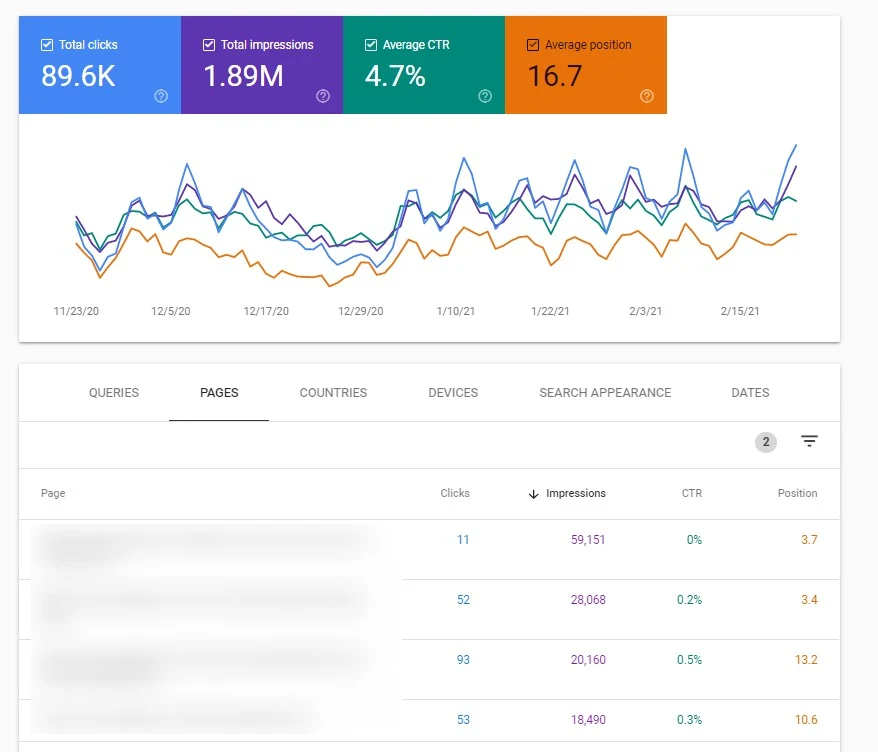
Any one of these four posts would be good candidates for updating. They have a decent number of impressions for my site and niche, the average position for all of them is better than my site-wide average and the CTRs are all horrible compared to my site average.
But we don’t need to jump in immediately and start updating these because we have a little more analysis to do first.
What exactly is a person looking for when they search for a particular term? If I search for “pizza,” what am I looking for? The closest pizza restaurant? A pizza recipe? The different types of pizza?
If our post doesn’t match the intent of the keyword phrases we’re ranking for, it may not make sense to try to improve CTR. Instead, think about whether you can update the post to match the intent.
Let me give you an example:
One of my clients has a blog post about creating a dry creek bed to help with the drainage in her yard.
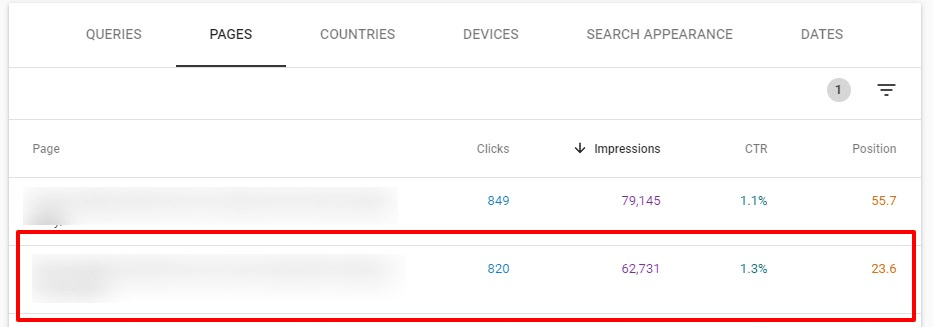
Her Google Search Console results for that post seem to indicate that this would be a good candidate for updating. She has lots of impressions, a decent page position and a low click through rate.
So, let’s see what queries she’s ranking for.
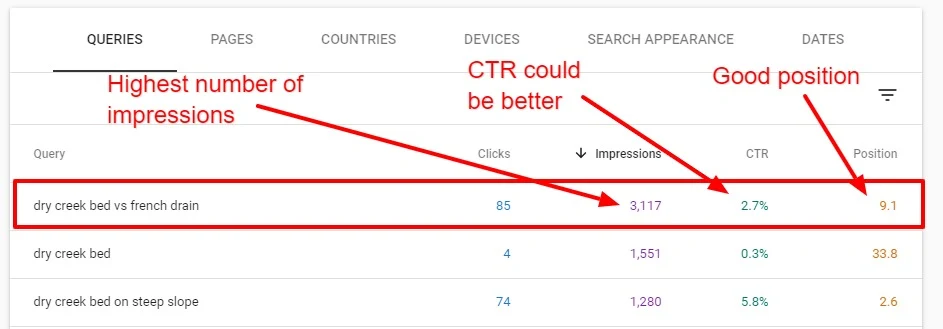
Based on these numbers, we should try to improve her CTR for the keyword phrase “dry creek bed vs French drain.”
We could stop our analysis here and start working on the post, but our ROI probably wouldn’t be the best.
Here are the results we get when we search for the term “dry creek bed vs French drain.”
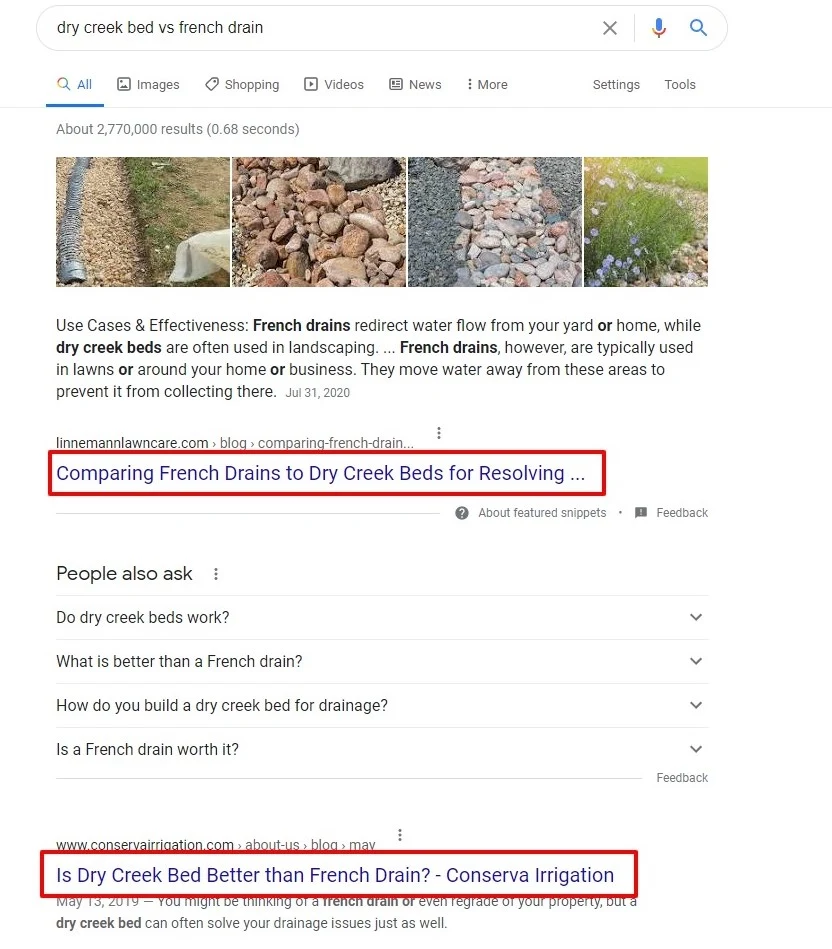
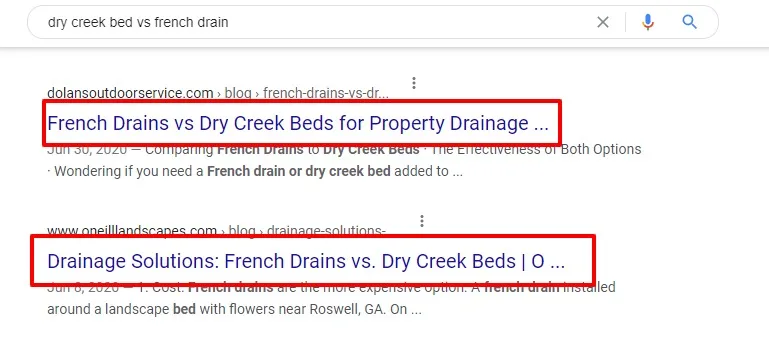
Based on these results, it seems that someone searching for this term is looking for a comparison between the two. They’re probably trying to decide whether to put a French drain or a dry creek bed in their yard.
My client’s post is about how she created a dry creek bed, so it would be a better post for someone who has already decided that’s what they want —not for someone who is researching the differences.
You may ask why she’s ranking for this term, and it’s because she mentions a French drain once in the post.
This particular post doesn’t meet the searcher’s intent for this term, so this is not a post she can update for a comparison.
Trying to improve the CTR for this post isn’t likely to yield results.
Another client wrote a post about making a diy bathtub tray.

The post looks like a good candidate. It has good impressions with a low CTR, so let’s see what queries it’s ranking for.
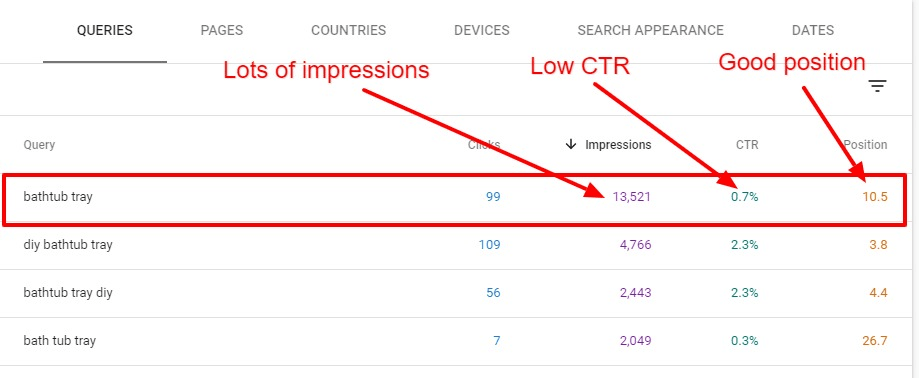
Looks like there is a lot of opportunity for the keyword phrase “bathtub tray.”
Head over to Google and search for “bathtub tray.” You may want to open an incognito window so that your results aren’t skewed by your own search history.
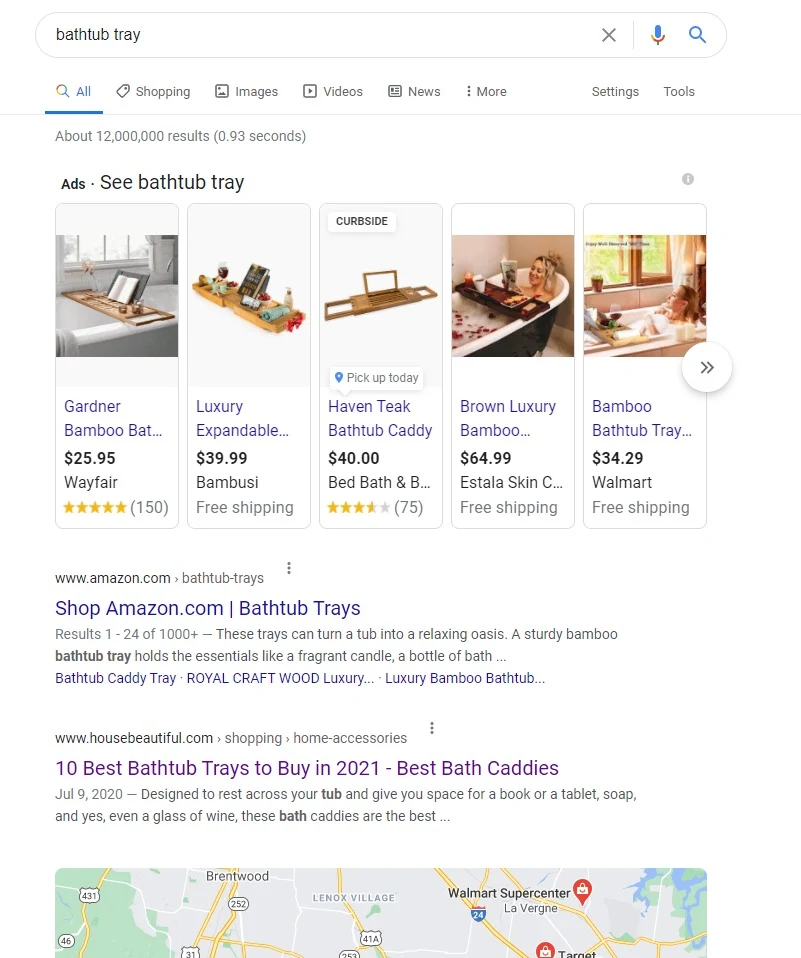
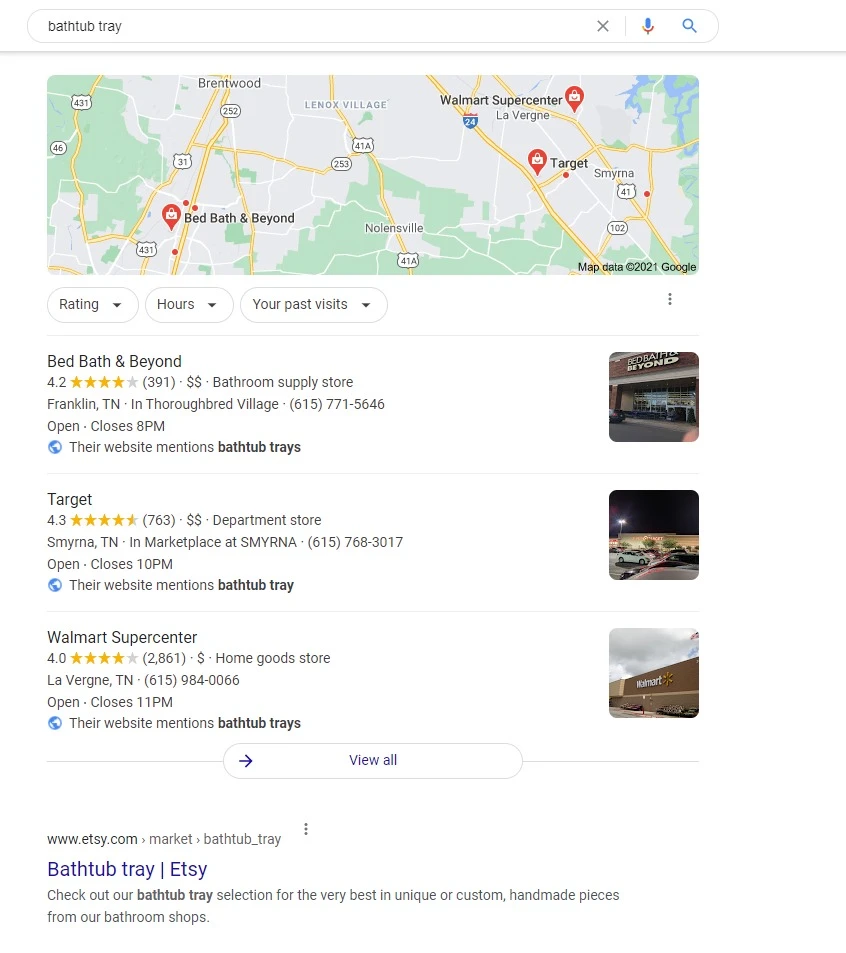
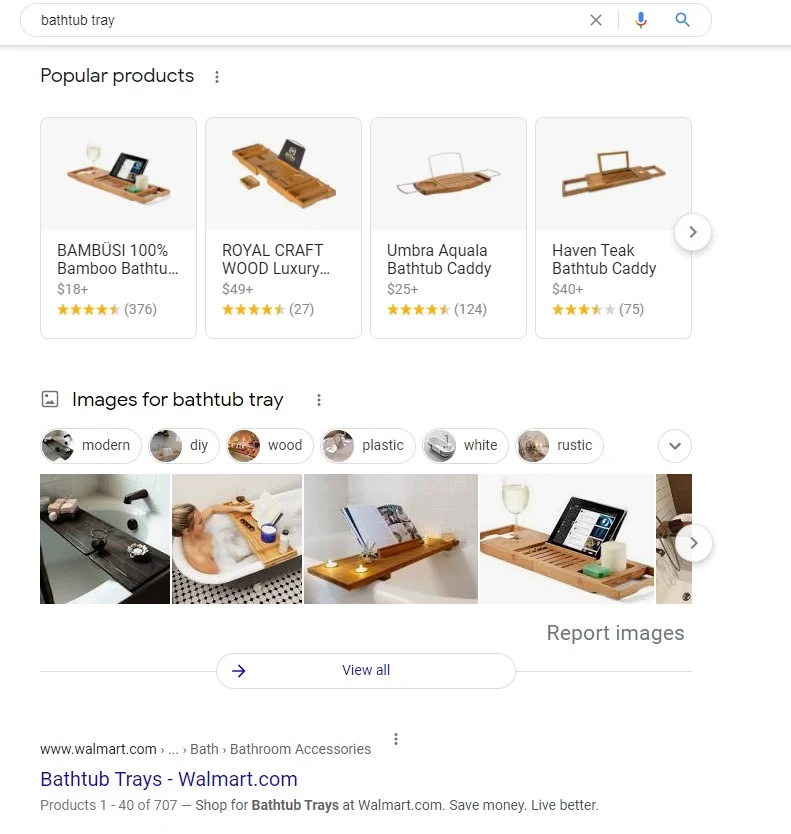
Unfortunately, the search results tell us this may not be a good post to optimize.
First, it’s not likely that our blog post will outrank Amazon or House Beautiful. It’s not impossible, but it is definitely not low hanging fruit.
Second, Google thinks that if you’re searching for the term “bathtub tray,” it’s because you want to buy one, not build one.
If you notice, the next two queries are “diy bathtub tray” and “bathtub tray diy.” Together, they have about 7,200 impressions, so you may decide to work on improving your CTR for these terms.
I would make note of this information and continue your analysis to see if there are other posts with higher potential.
After you’ve identified the posts to work on, it’s time to start updating.
We’re going to talk about two of the post attributes that impact CTR — titles and meta descriptions. Both of these can help your post stand out on the search results page.
Titles on the search results pages are usually in blue font that’s a bit larger than the other elements.
Some of the changes you can make to titles are:
These types of headlines are more likely to match the searcher’s intent.
Here are some examples:
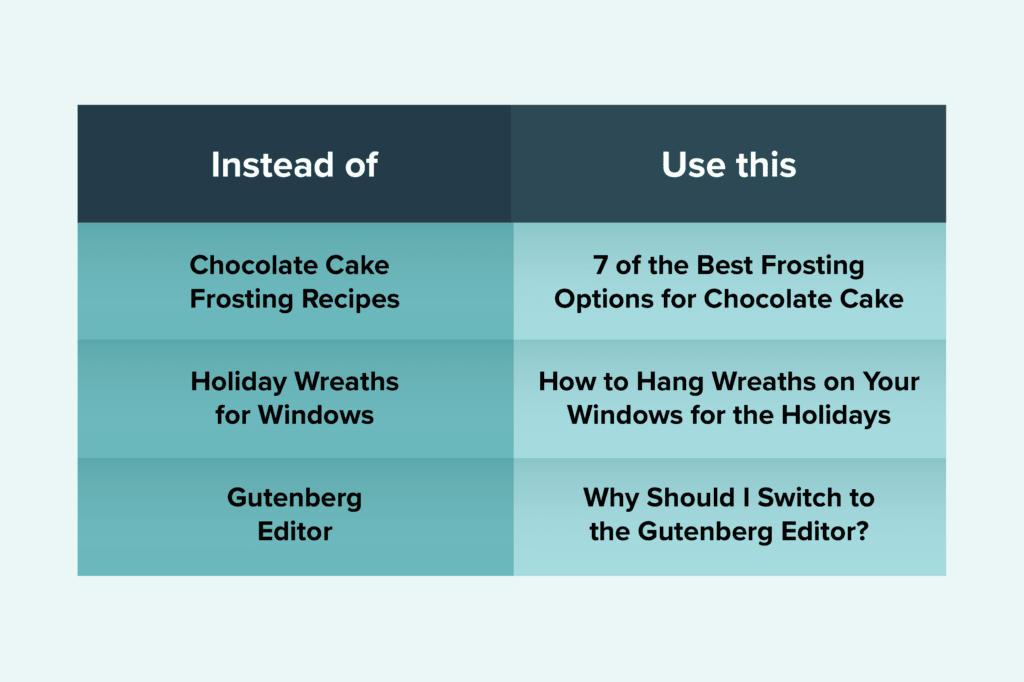
Numbers attract our attention, so we’re more likely to click on them. I personally think there’s an “I’m getting more for my money” rationale behind it too.
If I see “9 Socially Distanced Service Projects for Cub Scouts,” I think I’m getting more information than if the title was simply Socially Distanced Service Projects for Cub Scouts.
Examples include:
Did you know there’s an option to automate the year in your title? But just because you can do it doesn’t mean you should.
If it’s content that you’re going to tweak each year, change the date when you tweak it. The last thing you want is outdated 2021 information on a post that says it’s for 2025.
Date ideas include:
You don’t want your title to be too long or too short.
What is the right length for your title? It depends. Right now Google is showing a maximum of 600 pixels (not characters). As we all know, Google likes to change things, so when you’re reading this, the maximum may be different.
Because Google is using a fixed width of 600 pixels, titles with more narrow letters can include more characters.
Here’s an example:
iiiiiiiiiiiiiiiiiiii
wwwwwwwwwwwwwwwwwwww
Both of these lines have 20 characters, but the length is very different because W is a wider letter and takes up more pixels than I.
If you use the Yoast SEO plugin, you can see how your title will look in the search results. Moz also has a title tag preview tool.
There may be times when you may intentionally make your title too long to build up some intrigue. People might click over just to find out what the missing part is.
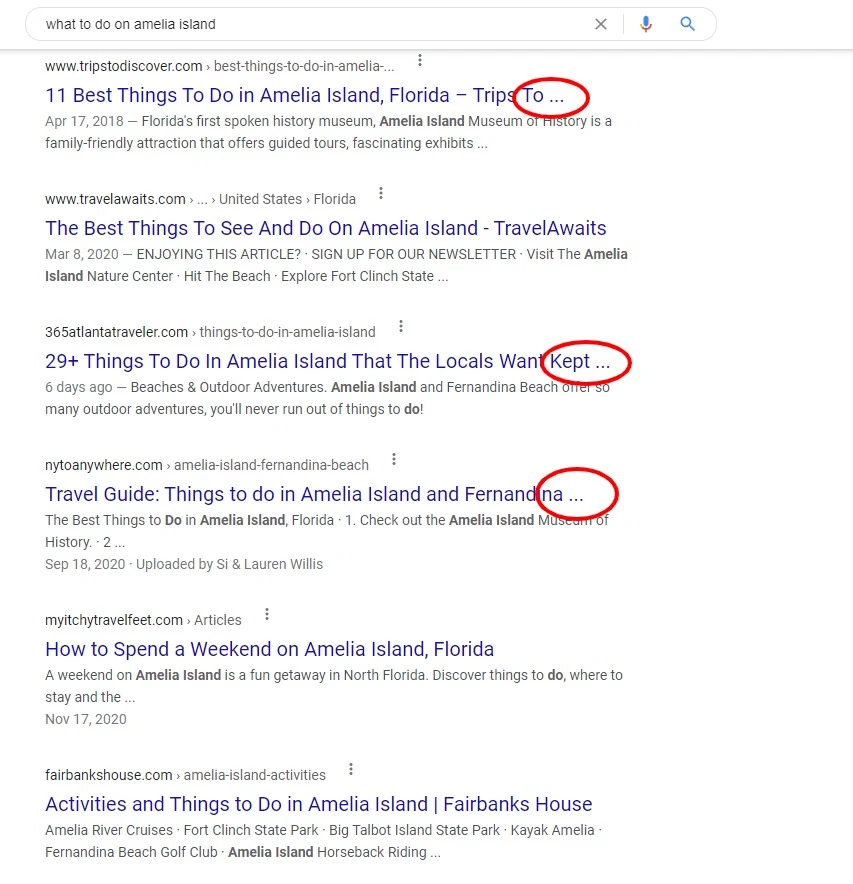
Are you ranking for keywords that aren’t in your title? Could you add them?
One of my posts is How To Make Super Cool (And Easy) Cub Scout Robots, and it was doing well on Pinterest but not on search.
Last October, I realized that it was ranking for the terms “toothbrush robot” and “toothbrush robots” (the plural version), but the search results were showing the title “How to Make Super Cool (And Easy) Cub Scout Robots.” If you aren’t a Cub Scouting family, you would assume that this is something specific to the Cub Scout program and would probably skip right over the results.
This chart shows my results from July through October.
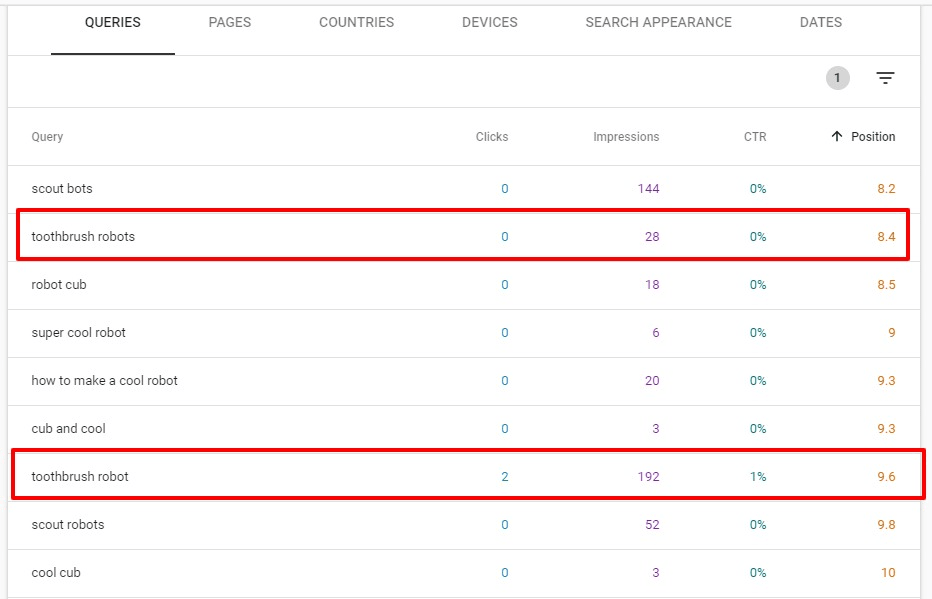
I updated the post in October.
One of the changes I made was to change my SEO title to “How to Make Super Cool (and Easy) Toothbrush Robots.” If you’re on my site, the title still says Cub Scout Robots but it shows up as toothbrush robots in search results.
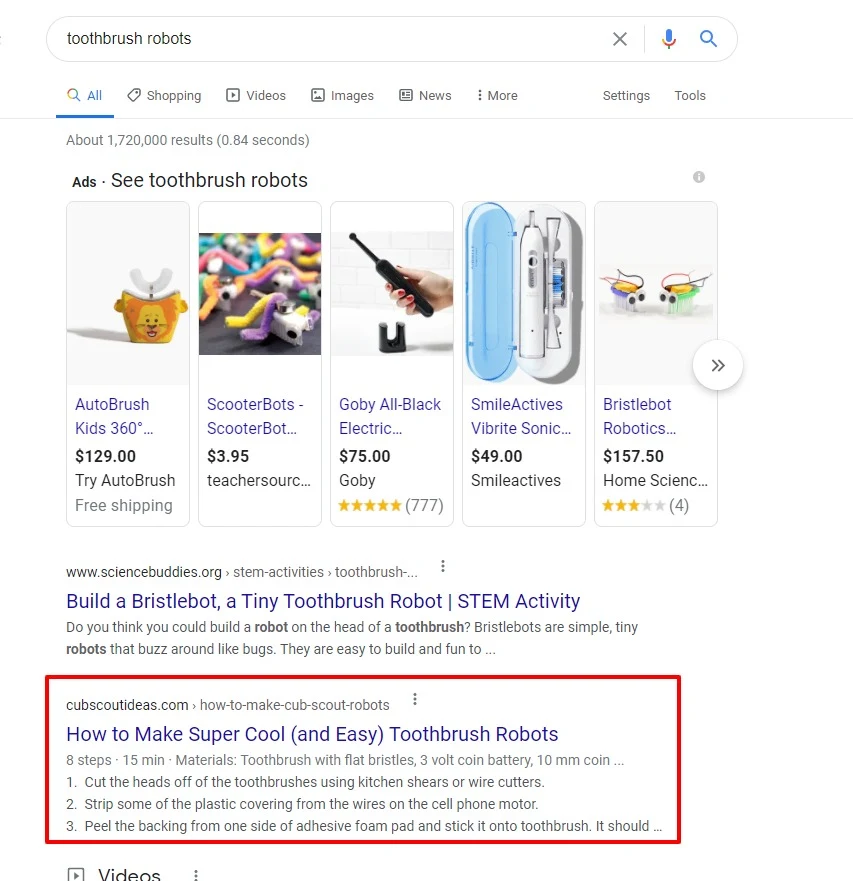
Here are my results for the three months after the post was updated:
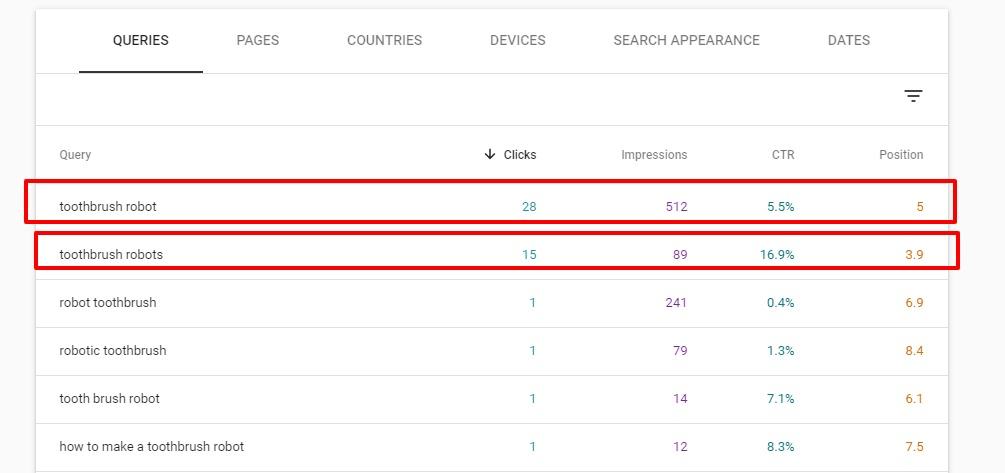
You can see how much better my average position and CTR are for those terms.
One caveat was that I changed several things during the update, so I can’t say that the improvement came just because of adding the keyword to the SEO title.
Way back in ancient times (2009!), Google told us they don’t use meta descriptions as a ranking factor and they may not show your exact meta description in search results, but that doesn’t mean they aren’t important.
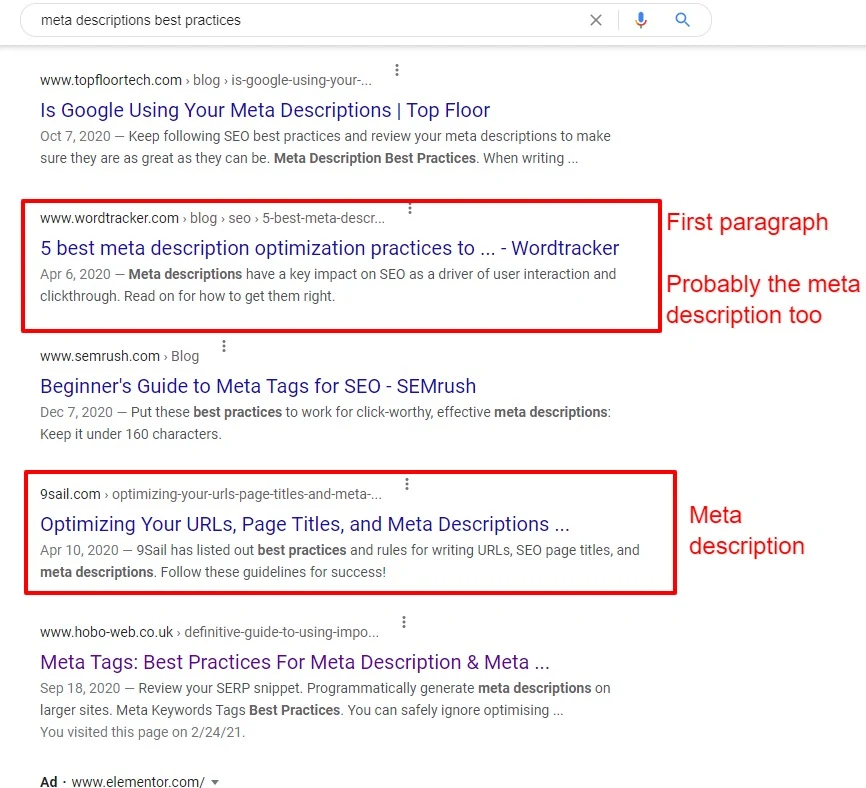
Think about your meta description as an invitation to visit your post. When I’m scanning through search results pages, I want to see WHY I should visit your post rather than any of the other ones.
Here are a few things to keep in mind when writing your meta descriptions.
1. Keep it to 155 characters
2. Have a call to action
3. Include your keyword
4. Explain the benefits
Generally, Google will truncate your meta description at about 155 characters or so. If it’s longer than this, an ellipsis will be added at the end.
Now, if you want to create a little mystery, write a longer description. You can see an example of this in the second image below where we’re told, “…just imagine this,…” What should I imagine? Inquiring minds want to know, so I’ll have to click over to figure it out!
A good meta description tells the searcher exactly what they should do. Check out some of these great calls to action from the examples below.
“Read on for how to get them right.”
“Follow these guidelines for success.”
Make sure you include your keyword in your meta description. Google will bold the words that match the search terms. This draws the attention of the person searching because when they see their phrase bolded, they’re likely to click on over.
Basically, you’re selling your post to the searcher. And the best way to sell anything is to explain how the product (or post in this case) will help the buyer (or searcher). Take a look at the examples from the “how to improve bowling skills” search results.
One of them tells us that by practicing the techniques they’re going to share with us, we’ll hone our skills to improve our game. Another one tells us the bowling improvement tips they’re sharing will help us be more confident about our skills.
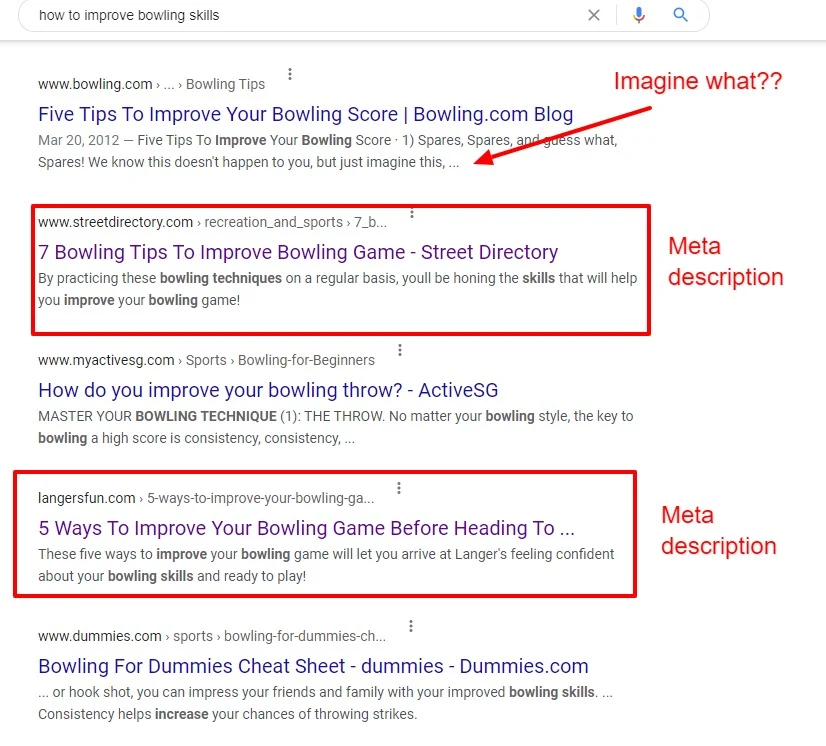
While you may be focused on these particular ways to improve your click through rate, don’t overlook other updates you can make. Does your post need a recipe card? More images? More text? Updated information? You can add these while you’re working on the post.
Look for interlinking opportunities. If you’re like me, you’re pretty good at linking from a new post to some old ones but you may forget to link to the new post from old ones.
Promote your post again. Share it to your social media platforms and also include it in your newsletter.
After you’ve updated your old post, add a note to your calendar for about a month or six weeks out to remind yourself to check your results to see if your hard work has paid off.
Stay up to date with the latest from Mediavine
 Eric Hochberger
Eric Hochberger
It’s been two and a half years since Google first announced Google Analytics 4, the latest version of its ubiquitous Google Analytics service. Beginning last week, many publishers began receiving …
 Eric Hochberger
Eric Hochberger
Google recently announced that any publisher passing the new Page Experience algorithm will be considered for the top story carousels in Google News. This shift comes after years of Google …
 Eric Hochberger
Eric Hochberger
Whether it’s for SEO or monetization purposes, we always encourage publishers to update old content. We’ve discussed at length how specifically to update content to improve RPM and optimize for …